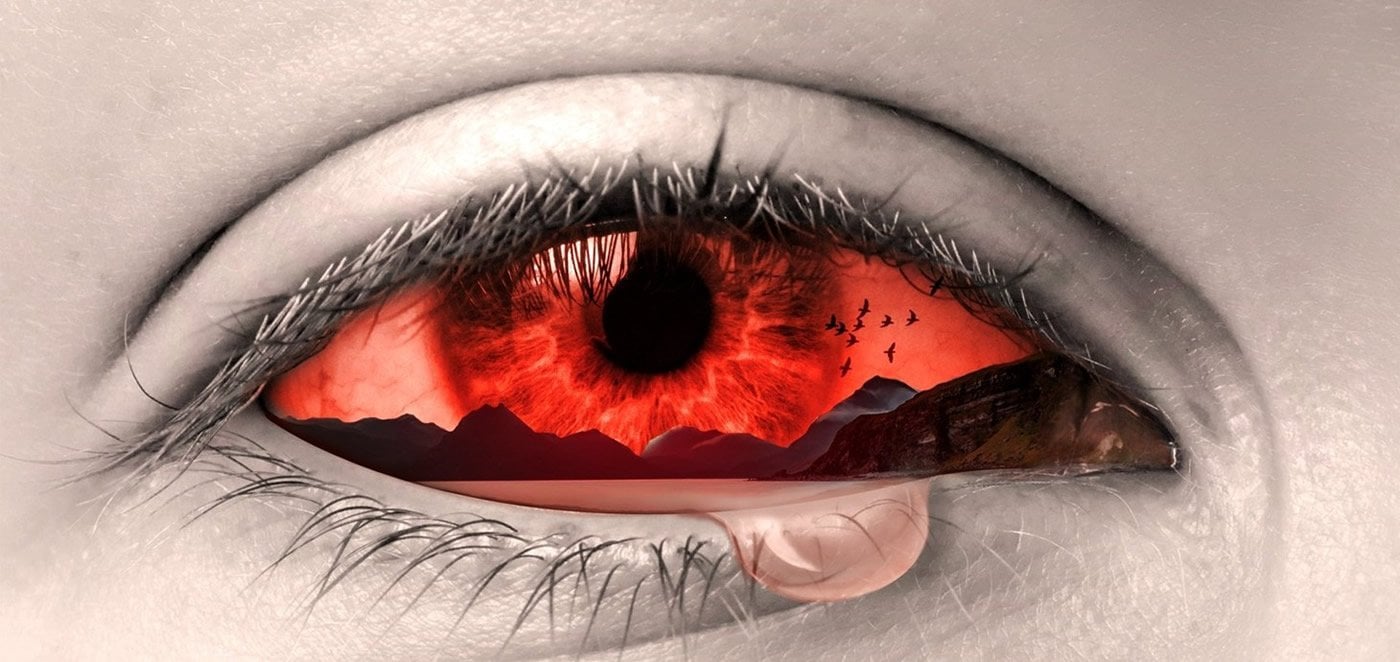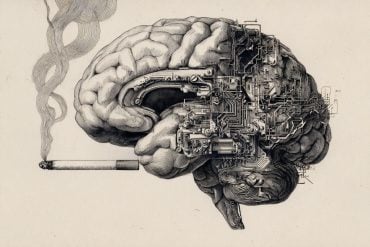Summary: Pupillary response in those with PTSD differs from people who have not experienced traumatic events. The pupils of those with PTSD failed to show sharp constriction caused by light changes, and more enlargement when exposed to emotional stimuli that other participants. Patients with PTSD not only showed an exaggerated response to threatening stimuli but also to stimuli that depicted positive images.
Source: Swansea University
New research by Welsh academics shows that a patient’s pupils can reveal if they have suffered a traumatic experience in the past.
Post-traumatic stress disorder can occur when a person has experienced a traumatic event such as a car crash, combat stress, or abuse. They can be left with a greater sensitivity, or hyperarousal, to everyday events and an inability to switch off and relax.
The research, led by Dr Aimee McKinnon at Cardiff University and published in the journal Biological Psychology, looked for traces of these traumatic events in the eyes of patients who were suffering from PTSD by measuring the pupil of the eye while participants were shown threatening images such as vicious animals or weapons, as well as other images that showed neutral events, or even pleasant images.
The response of people with PTSD was different to other people, including people who had been traumatised but did not have PTSD.
At first the pupil failed to show the normal sharp constriction that is caused by changes in light level – but then their pupils grew even larger to the emotional stimuli than for the other participants.
Another unexpected result was that pupils of the patients with PTSD not only showed the exaggerated response to threatening stimuli, but also to stimuli that depicted “positive” images, such as exciting sports scenes.
Swansea University’s Professor Nicola Gray, who co-authored the paper along with Professor Robert Snowden of Cardiff University, believes this is an important finding.
She said: “This shows that the hyper-response of the pupil is in response to any arousing stimulus, and not just threatening ones. This may allow us to use these positive pictures in therapy, rather than relying upon negative images, that can be quite upsetting to the patient, and therefore make therapy more acceptable and bearable. This idea now needs testing empirically before it is put into clinical practice.”

Dr McKinnon, who is now at Oxford University, added: “These findings allow us to understand that people with PTSD are automatically primed for threat and fear responses in any uncertain emotional context, and to consider what a burden this must be to them in everyday life.
“It also suggests that it is important for us to recognise that, in therapy, it is not just the fear-based stimuli that need deliberately re-appraising.
“If someone with PTSD is faced with any high-level of emotional stimulation, even if this is positive emotion, it can immediately trigger the threat system. Clinicians need to understand this impact of positive stimuli in order to support their service-users overcome the significant challenges they face.”
About this psychology research article
Source:
Swansea University
Media Contacts:
Kathy Thomas – Swansea University
Image Source:
The image is credited to Swansea University.
Original Research: Closed access
“Enhanced emotional response to both negative and positive images in post-traumatic stress disorder: Evidence from pupillometry”. by Aimee I. Mckinnon, Nicola S. Gray, Robert J. Snowden. Biological Psychology
Abstract
Enhanced emotional response to both negative and positive images in post-traumatic stress disorder: Evidence from pupillometry
Post-traumatic stress disorder (PTSD) is characterised by alterations in the function of the autonomic nervous system. However, it is unclear if this dysfunction is threat-related or related to arousing stimuli in general. Pupillometry offers a simple non-invasive measure of ANS activity that can separate parasympathetic and sympathetic arousal. Participants viewed images with emotional or neutral content: 20 met diagnostic criteria for PTSD, 28 were trauma-exposed (but with no PTSD), and 17 were controls. Initial pupil constriction (a marker of parasympathetic function) was reduced for the PTSD group, while dilation due to the emotional content of the image (a marker of sympathetic activity) was greater in the PTSD group. Individuals with PTSD demonstrated enhanced physiological arousal to both threat-related and positive images. The results suggest reduced parasympathetic arousal and increased sympathetic arousal in the autonomic nervous system, which has been linked to a range of adverse health outcomes in PTSD.







